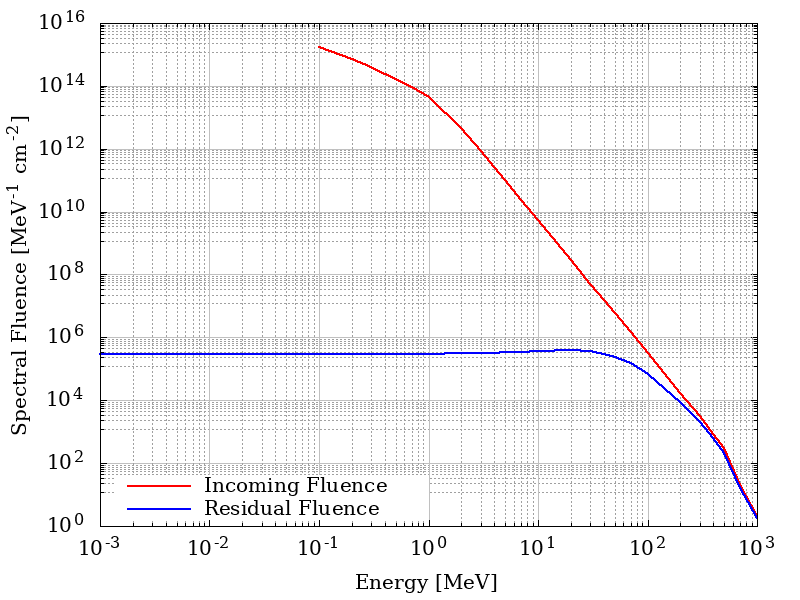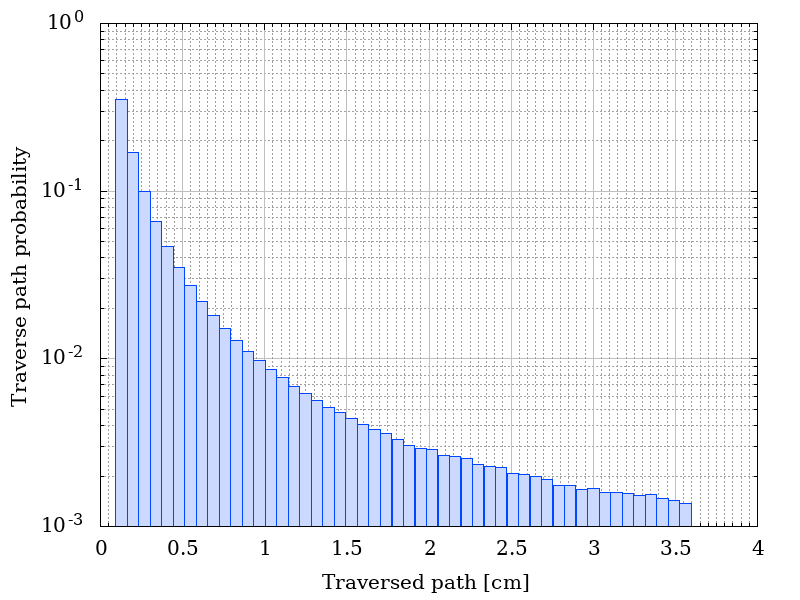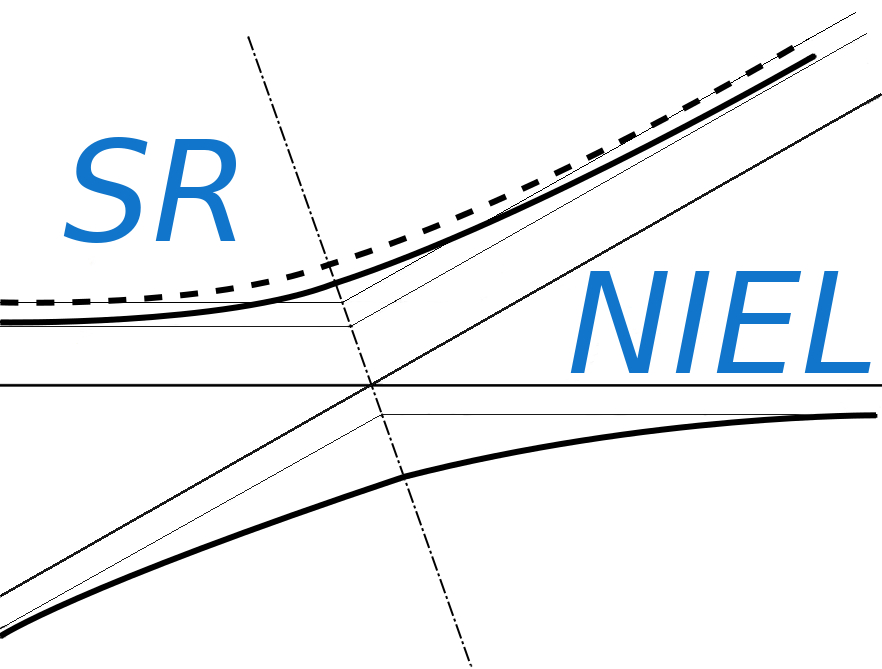The current web calculator allows one to obtain the residual spectral fluence of isotropically distributed protons and ions traversing a spherical shield by exploiting the "SRIM Module.exe" included in SRIM 2013 code (SRIM Tutorials with an upper energy limit of 5 GeV/nucleon), i.e., the used electronic stopping power tables are those provided by SRIM code with a low energy limit of 1 eV. The probabilty distribution of path lenghts in the spherical absorber is obtained by means of a GEANT4 simulation.
 Shield thickness t is set to 0.127 cm (50 mils), sphere radius R to 50 cm and the number of steps to 10. The distance from center is r= R-t. Spectral fluence data are calculated with JOREM Model implemented in SPENVIS assuming a 4 sr solid angle exposure.Following is the corresponding probability density of traversed path:
Shield thickness t is set to 0.127 cm (50 mils), sphere radius R to 50 cm and the number of steps to 10. The distance from center is r= R-t. Spectral fluence data are calculated with JOREM Model implemented in SPENVIS assuming a 4 sr solid angle exposure.Following is the corresponding probability density of traversed path:



